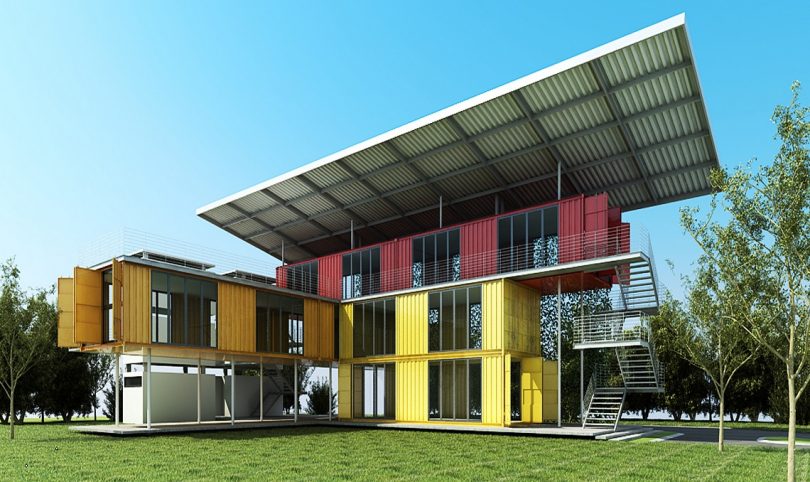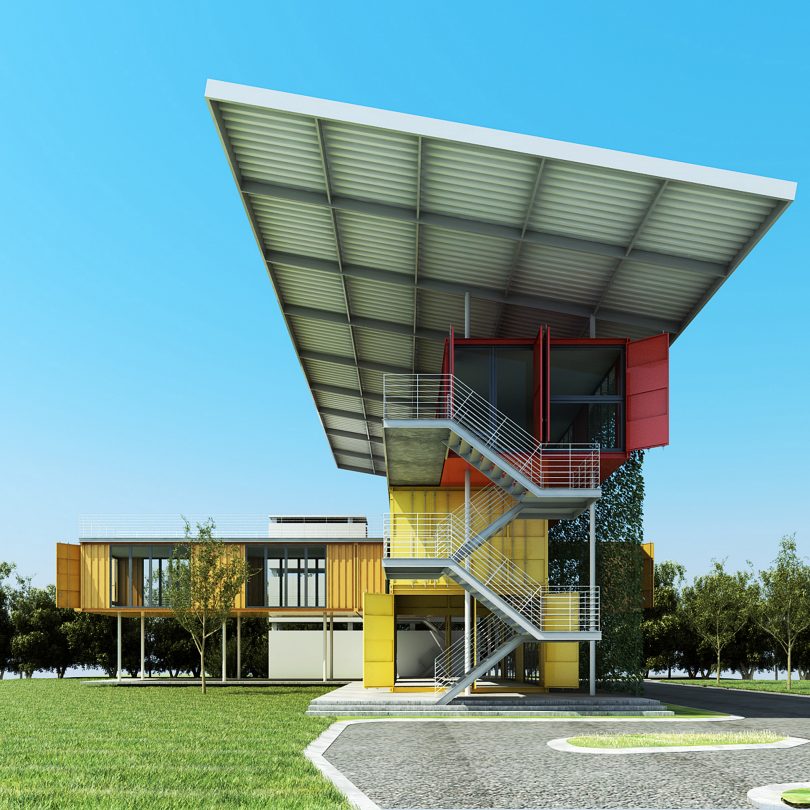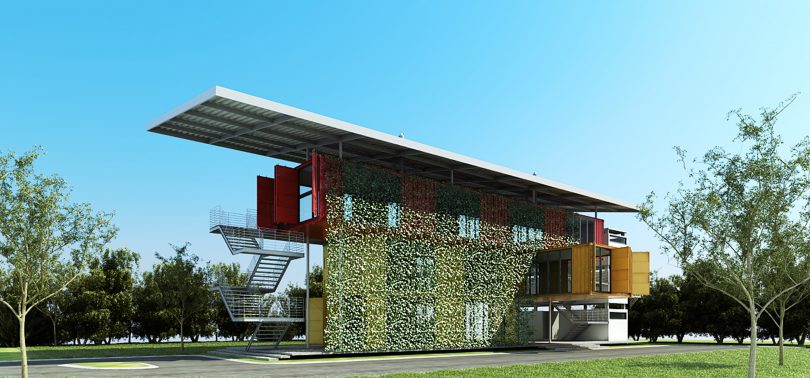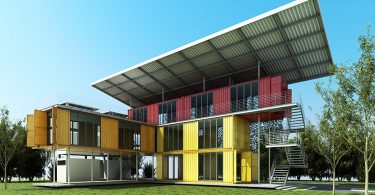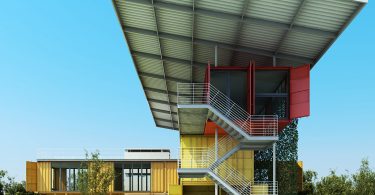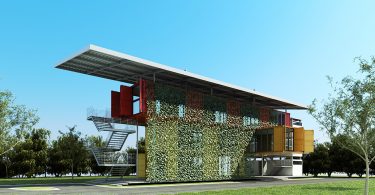One of the objectives of this school is to allow users to observe and explore the living environment by creating outdoor learning classrooms. To cater for the wide variety of autism symptoms, one of the main architectural properties of Green Bin is to have spaces to alter sensory inputs for behavioural interventions. A simplified overall design of the built-up form is preferred to reduce visual complexity, which can cause distractions and stress for autistic children.
The simplification of the architectural forms and arrangements will also allow for flexible activity spaces. The emphasis is to implement a daily routine where classrooms can transform from indoor exercise and behavioural development areas to outdoor breakout spaces.
Each bin will be populated with a gradual series of differing stimuli according to the state of the user/s. The size of each space ranges from individual ‘escape spaces’ to a combined sensory zone. The ideal goal is to create a compatible sensory environment to help the children learn essential skills and perhaps modify their autistic behaviour.
Steel will be the primary material for two reasons. Firstly, it is reusable and recyclable, which can be salvaged if the school needs to be relocated or expanded in the future. Secondly, it promotes a sustainability platform for the autistic children.
Due to a low budget, the team convinced the client to adopt passive design strategies such as harnessing daylight; promoting cross ventilation; placing a large roof overhang to shade the building; harvesting rainwater, etc. It will also be cheaper to maintain the building as it will require less energy to cool it down to a comfortable level.
Location: SS3, Petaling Jaya, Malaysia
Status: Design Stage
Site Area: Approximately 1 acre
Gross Floor Area: 3,200 square feet
Number of Rooms: 8 classrooms; 1 multipurpose hall
Building Height: 3 storeys
Client/Owner: Private
Architecture Firm: CH&I Architecture Sdn Bhd
Principal Architect: Michael CH Ching
Images/Photos: CH&I Architecture Sdn Bhd

 Hong Kong
Hong Kong Singapore
Singapore Indonesia
Indonesia Tiếng Việt
Tiếng Việt ประเทศไทย
ประเทศไทย

